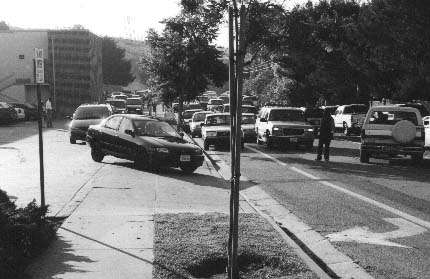Brace yourselves. Millennium New Year’s Eve banquets may be serving guacamole instead of foie gras, Triscuits for truffles, Cheeze Whiz for Camembert. One small consolation: Spam will not have to replace prosciutto, exempt (among fresh, chilled, frozen or processed pork products) from President Clinton’s list of European delicacies now subject to 100 percent tariffs. Why prosciutto? Have the Italians angered him less than the French? Does he prefer prosciutto on his pizza?
Now, I had no problem with his first set of trade sanctions against the European Union last spring — they imposed increased duties on American bananas, we upped the ante on linens and handbags — a nice traditional trade war.
This latest salvo is different. It’s not about one country dumping produce at below market rates to squeeze local growers out of the competition. (The great kiwifruit controversy was successfully negotiated with New Zealand sans tariffs.)
Since 1989, the 15-nation European Union has banned the import of U.S. beef treated with growth hormones, and the U.S. now retaliates with a whopping hike on gourmet delicacies, specifically chosen because they have no American counterparts. Velveeta just doesn’t cut it when the palate craves Roquefort.
But this goes to the heart of any nation’s right to ban imports of foods it deems unsafe. After all, European countries are still reeling from the impacts of mad cow disease and dioxin-tainted poultry. They’ve got a right to ban hormone-laced beef and genetically altered crops.
Does that mean we should create havoc and economic hardship among caterers and importers of European delicacies, to destroy culinary tradition — as the French insist we are doing to them with the invasion of mcburgers and greasy “French fries,” a dumbed-down artery-clogging version of their beloved pommes fritte?”
French farmers, who have a well-earned reputation for creative protest (pouring milk down the Champs Elysses, dumping tons of ripe dung in inconvenient public places), marched last week on the annual American Film Festival in Deauville.
Mooing cows and snorting pigs (not rooting for truffles) greeted movie stars on the chic beach boardwalk of the Normandy resort town, as 200 farmers carried signs reading “Vive le Camembert” and “Hormone Beef Go Home” — graphic, if somewhat gauche.
What it boils down to is this: The U.S. Food and Drug Administration permits, perhaps even encourages, the use of bovine growth hormone in beef and dairy products, without requiring labels to reveal its presence. At one time, labeling products hormone free was prohibited. Ben and Jerry’s won that one in court, but they shouldn’t have had to spend bezillions on legal costs just to say their ice cream comes from cows not treated with hormones.
Let’s see if I’ve got this straight. The drug companies produce hormones and market them to the dairy industry as a way to make each cow produce more milk. Did anyone ask the cows if they thought this a good idea? And why would we want to produce more milk when generally there is a milk surplus that drives prices down and causes the dairy industry to lobby for price supports and the government to buy up all the surplus cheese and dump it into the school-lunch program. The USDA is currently being lobbied by California prune growers to buy its surplus and add prune puree to school-lunch hamburgers, but let’s not go there.
Beef cattle are fed hormones and antibiotics to make them gain weight faster at a time when growing numbers of Americans are eating more pasta and pizza. Go figure.
Surplus beef products have to go somewhere, and if the Europeans won’t buy them, we will make them pay. What are we missing here? If scientists at chemical and drug companies quit technically altering our food, perhaps the economy (the old-fashioned law of supply and demand) could regulate the food supply, and maybe we wouldn’t have to force the rest of the world to take up the slack.
So the EU bans hormone-treated beef products, and since they’re not so labeled, who could tell the difference? We slap a retaliatory tariff on their goose liver pate and fancy fungi. Even offal — tongues, guts, bladders, stomachs and other yucky body parts– are named in the tariffs. Wait a minute! Wasn’t offal in cattle feed blamed for the spread of mad cow disease?
The French have chaffed for years under what they see as creeping degradation of their culture by Americans. They even have a ministry to prevent more American words from creeping into the French language. And since French identity is largely defined by its food, it’s only natural they should fear industrialized agriculture, the globalization of genetically altered crops and hormone-fed beef, which some Europeans have dubbed “Frankenstein foods.”
American marketing muscle is tough to fight (It took Oprah’s considerable resources to fight Texas beef industry charges she libeled a hamburger.), but when it comes to foie gras and truffles, Roquefort and Camembert, the French hold all the cards. And while middle America may be blissfully unaware of such delicacies, cosmopolitan appetites are not so easily sated. A New Year’s Eve bash with Velveeta and bean dip will probably bomb. It’s just too, well, American.

